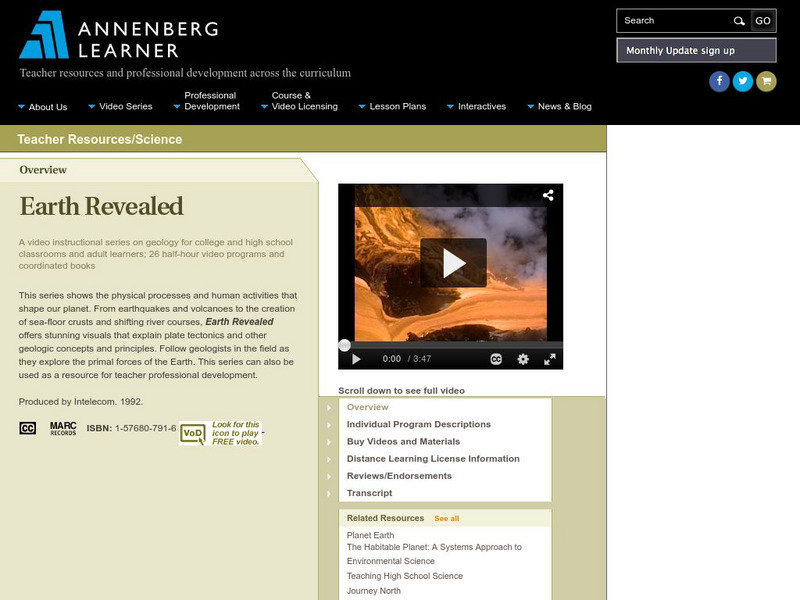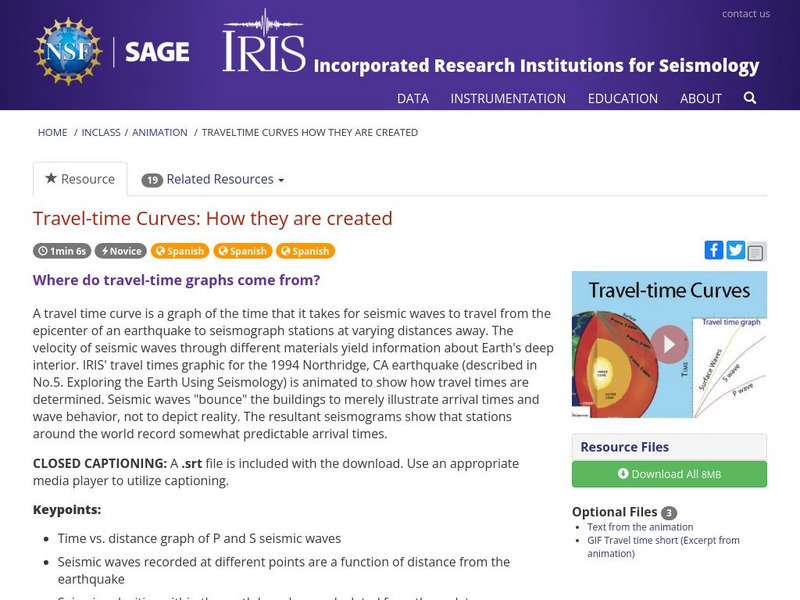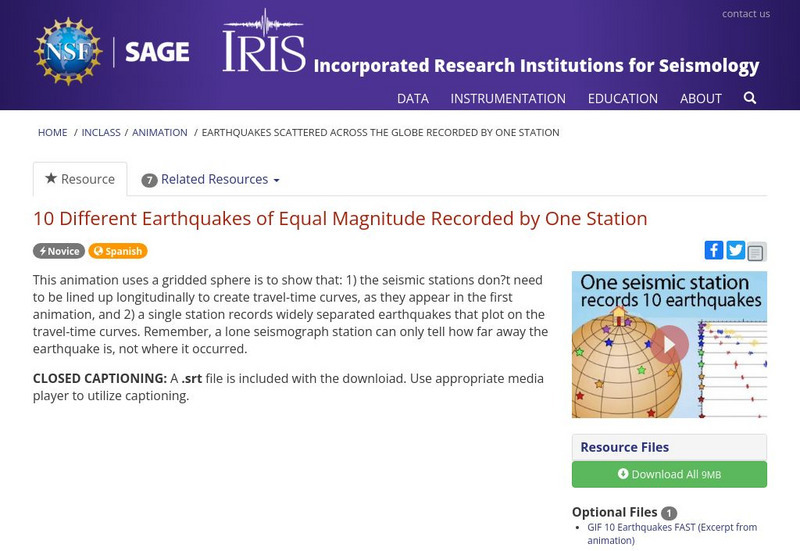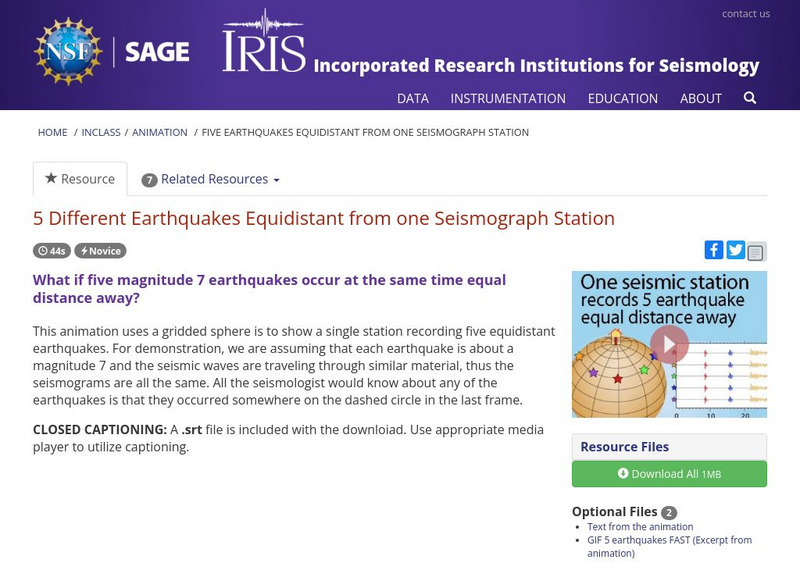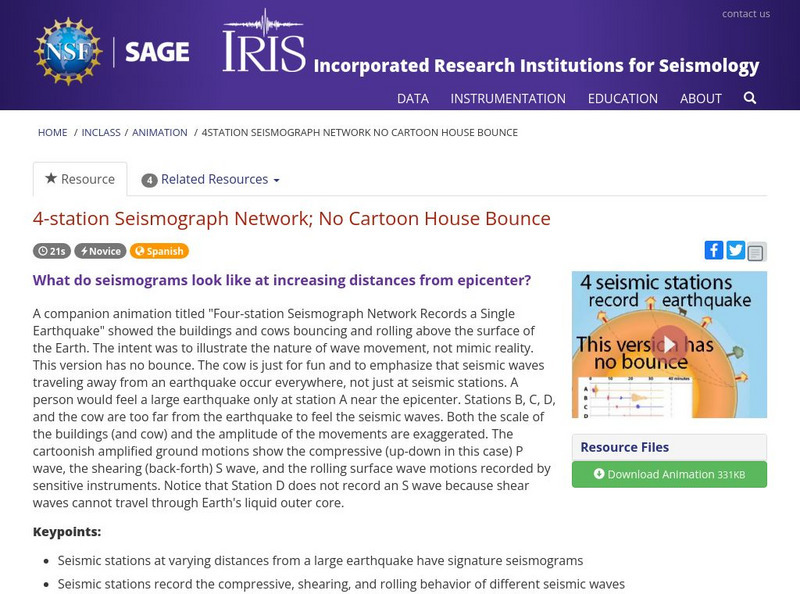TED-Ed
Why Do Buildings Fall in Earthquakes?
There are few natural phenomena as startling as an earthquake, and depending on the building you're in, these experiences can be downright terrifying. Follow along as this video explores the factors that determine how a building...
California Academy of Science
Earthquake Engineering
Protecting buildings, bridges, and roadways from damage during an earthquake is an important task for engineers. Discover how one lab goes about testing the safety of existing and yet-to-be-built structures with a short video. See some...
Annenberg Foundation
Annenberg Learner: Earth Revealed
To support or supplement a course in earth science or geography, Annenberg Media offers twenty-six Videos on Demand (VoDs). The topics coverd range from why Earth can sustain life, to plate tectonics, to rock types and landscape...
Other
Kids Science Challenge: A Day in the Life of a Seismologist
In this video students will discover what it means to be a seismologist [3.34]
Incorporated Research Institutions for Seismology
Iris: Reflection Seismology: Seeing Below the Ground
How do seismologists actually see the images in the layers of Earth below us? Find out in this video clip. [0:46]
Khan Academy
Khan Academy: Science Bulletins: Mapping the Heat Beneath
As seismic waves from earthquakes pass through the planet, their patterns can reveal hidden dynamics-hotspots, deep-diving rock, melting mantle-in Earth's interior. An array of seismometers that's being installed across the United States...
Incorporated Research Institutions for Seismology
Iris: Travel Time Curves: How They Are Created
See how travel-time curves are created. [2:52]
Incorporated Research Institutions for Seismology
Iris: 10 Different Earthquakes of Equal Magnitude Recorded by One Station
This animation uses a gridded sphere is to show that: 1) the seismic stations don't need to be lined up longitudinally to create travel-time curves, as they appear in the first animation, and 2) a single station records widely separated...
Incorporated Research Institutions for Seismology
Iris: 5 Different Earthquakes Equidistant From One Seismograph Station
This animation uses a gridded sphere is to show a single station recording five equidistant earthquakes. [0:44]
Incorporated Research Institutions for Seismology
Iris: 4 Station Seismograph Network; No Cartoon House Bounce
See what seismograms look like at increasing distances from the epicenter. [0:21]
Incorporated Research Institutions for Seismology
Iris: Introduction to Marine Seismic Processing
This presentation and associated activity introduces students to both the concepts of processing marine seismic data as well a providing an introduction to PROMAX software.
Sophia Learning
Sophia: Math in Seismology: Lesson 3
This lesson shows students that math is used in the field of seismology. It is 3 of 5 in the series titled "Math in Seismology."
Sophia Learning
Sophia: Math in Seismology: Lesson 1
This lesson shows students that math is used in the field of seismology. It is 1 of 5 in the series titled "Math in Seismology."


